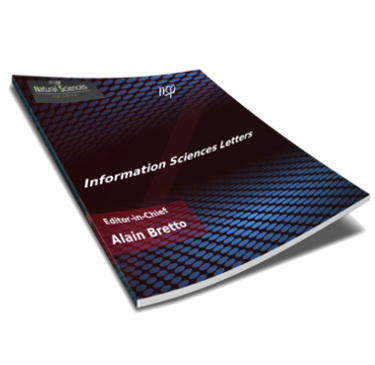
Information Sciences Letters
Abstract
Recently, an epidemic called COVID-19 appeared, and it was one of the largest epidemics that affected the world in all economic, educational, health, and other aspects due to its rapid spread worldwide. The surge in infection rates made traditional diagnostic methods ineffective. Systems for automatic diagnosis and detection are crucial for controlling the outbreak. Other than PCR-RT, further diagnostic and detection techniques are needed. Individuals who receive positive test results often experience a range of symptoms, ranging from mild to severe, including coughing, fever, sore throats, and body pains. In more extreme cases, infected individuals may exhibit severe symptoms that make breathing challenging, ultimately leading to catastrophic organ failure. A hybrid approach called SDO-NMR-Hill has been developed for diagnosing COVID-19 based on a patient’s initial symptoms. This approach incorporates traits from three models, including two distinct feature selection optimization methods and a local search. Supply-demand optimization and the naked mole rat were preferred among metaheuristic methods because they have fewer parameters and a lower computing overhead, which can help you find superfluous and uninformative characteristics. Hill climbing was preferred among local search methods to maximize a criterion among several candidate solutions. We used decision trees, random forests, and adaptive boosting machine-learning classifiers in various experiments on three COVID-19 datasets. We carried out a natural selection of the classifier’s hyper-parameters to optimize outcomes. The optimal performance was attained using the adaptive boosting classifier, with an accuracy of 88.88% and 98.98% for the first and third datasets, respectively. The optimal performance for the second dataset was attained using the random forest classifier, with an accuracy of 97.97%. The suggested SDO-NMR-Hill model is evaluated using nine benchmark UCI datasets, and 15 different optimization techniques are contrasted.
Recommended Citation
Elhussiny, Manar; E. Emam, O.; and Safaa.M.Azzam
(2023)
"A Proposed Framework to Improve Diagnosis of Covid-19 Based on Patient’s Symptoms using Feature Selection Optimization,"
Information Sciences Letters: Vol. 12
:
Iss.
7
, PP -.
Available at:
https://digitalcommons.aaru.edu.jo/isl/vol12/iss7/12

